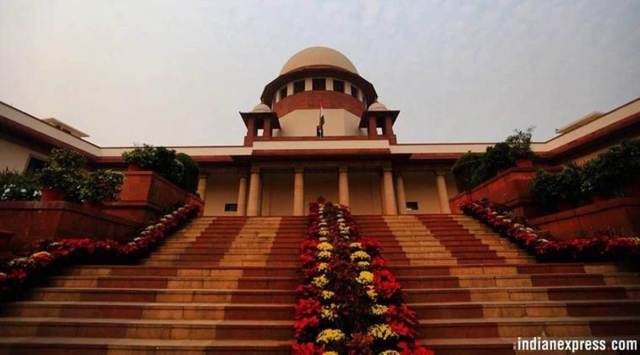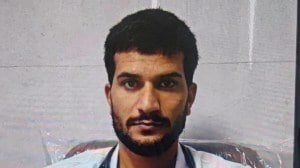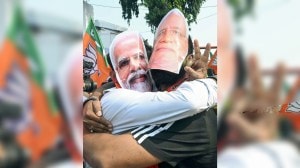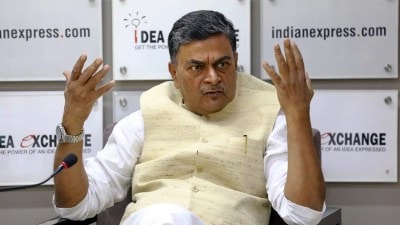Censured by the Supreme Court for not taking a stand on the politically sensitive question of identifying minorities at the state level and granting of minority status to Hindus in states where their numbers have fallen below that of other communities, the Centre has finally broken its silence and put the onus on states, saying they too have the power to declare communities as ‘minority’.
In an affidavit filed in the top court, the Union Ministry of Minority Affairs said “state governments can also declare a religious or linguistic community as a ‘minority community’ within the state”.

The affidavit was filed in response to a 2020 petition by advocate Ashwini Upadhyay, who said that as per the 2011 Census, Hindus were a minority in Lakshadweep, Mizoram, Nagaland, Meghalaya, J&K, Arunachal Pradesh, Manipur, and Punjab and that they should be given minority status in these states in accordance with the principle laid down by the Supreme Court in its 2002 TMA Pai ruling.
Story continues below this ad
In the TMA Pai case, the SC had said that for the purposes of Article 30 that deals with the rights of minorities to establish and administer educational institutions, religious and linguistic minorities have to be considered state-wise.
Under Section 2(c) of the National Commission for Minorities Act, 1992, the Centre had in 1993 notified five communities — Muslims, Sikhs, Buddhists, Parsis and Christians — as minorities.
Upadhyay had in 2017 first moved the apex court praying for appropriate guidelines for the identification of minorities, and for Hindus to be declared as a minority community in some states and UTs where their numbers were below that of the majority community.
While seeking the quashing of the 1993 Central notification, he pointed out that Jains were also added to the list of minorities in 2014, but not Hindus despite them being a minority in some states and UTs.
Story continues below this ad
The Centre, in its affidavit, said the petitioners’ argument that the followers of Judaism, Bahaism, and Hinduism, who are “real minorities” in Ladakh, Mizoram, Lakshadweep, Kashmir, Nagaland, Meghalaya, Arunachal Pradesh, Punjab and Manipur cannot establish and administer educational institutions of their choice “is not correct” since states can also “certify institutions as being minority institutions as per the rules of the said state”.
The Centre pointed out that Maharashtra had notified Jews as a minority community in 2016 and Karnataka had notified Urdu, Telugu, Tamil, Malayalam, Marathi, Tulu, Lamani, Hindi, Konkani and Gujarati as minority languages.
Therefore, the government said, “matters such as declaring (that) the followers of Judaism, Bahaism, and Hinduism who are minorities in Ladakh, Mizoram, Lakshadweep, Kashmir, Nagaland, Meghalaya, Arunachal Pradesh, Punjab and Manipur can establish and administer educational institutions of their choice in the said state and laying down guideline(s) for identification of minority at state level may be considered by the concerned state governments”.
ExplainedPolitical sensitive issue
Granting the prayer of the petitioner to identify minorities at the state-level would mean that the Centre will have to take a decision on according Hindus and smaller groups with minority status in places such as Kashmir, Punjab and many Northeastern states, where the respective majority communities currently hold minority rights.
Seeking the dismissal of the plea, the Centre said in the affidavit that “the reliefs sought by the petitioner are not in larger public or national interest”.
Story continues below this ad
It, however, said a reading of the TMA Pai ruling also “reveals that the Supreme Court has nowhere eroded the power of the Central Government to notify a community as a ‘minority’” and that it “does not impinge or put any legal embargo on the executive powers of the Parliament and Central government”.
The government said that under the Constitution, both Parliament and state legislatures “have concurrent powers to enact law to provide for the protection of minorities and their interests” and added that “if the view that the states alone have the power to enact law on the subject of minority is accepted, then in such case, the Parliament will be denuded of its power to enact law on the said subject, and this would be contrary to the constitutional scheme”.
After Upadhyay moved the SC in 2017, the SC asked him to approach the NCM, which took the stand that it “does not have the jurisdiction to deal with the prayer…” and that under Section 2(C) of the NCM Act, only the Centre can declare a community as a ‘minority’.
Upadhyay again moved the SC, where a bench headed by then Chief Justice of India Ranjan Gogoi sought the assistance of Attorney General K K Venugopal.
Story continues below this ad
But by the time it was listed next for hearing, CJI Gogoi had demitted office and the new Bench headed by his successor CJI S A Bobde dismissed the plea without assigning any reasons.
Upadhyay then filed a fresh plea in August 2020, again challenging the constitutional validity of Section 2(c) of the NCM Act.
Though the SC has issued notice on August 28, 2020, the Centre failed to file its counter-affidavit. On January 31, the SC slapped a cost of Rs 7,500 on the government for dragging its feet and gave it one “further opportunity” of four weeks to respond. The case is scheduled to come up for hearing tomorrow, March 28.









